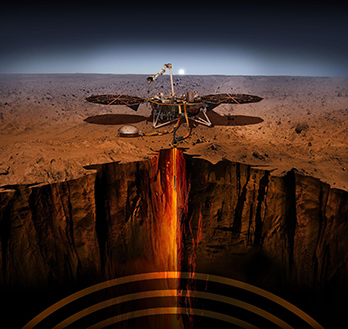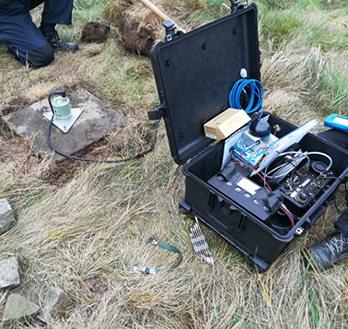Seismology
Research in the seismology group focuses on studying the information contained in seismic signals recorded in seismically calm times in the absence of earthquakes. Typically, these signals, which account for over 90% of seismic recordings worldwide, are discarded as "noise." It turns out, however, that this noise is made up of seismic waves that carry the imprint of the sources that produced them and the material they passed through.
The recording of seismic noise can therefore be used for many different purposes: signals obtained from the noise are used to illuminate the Earth's interior and evaluate how its structure changes over time. Applications range from the deep mantle and crust to the near surface to buildings. The noise itself can tell us how the solid earth interacts with the ocean and the atmosphere, which in turn provides information about weather conditions and climate.
In the seismology group, we "listen" to the seismic background noise to find out how the ocean produces it. We also use the seismic noise that surrounds us to monitor soil changes and damage to buildings. Finally, we are working on a number of projects using new sensor technologies (ring lasers, dense arrays and DAS/fiber optic cables) or developing new applications for established sensors (ocean bottom seismometers).









